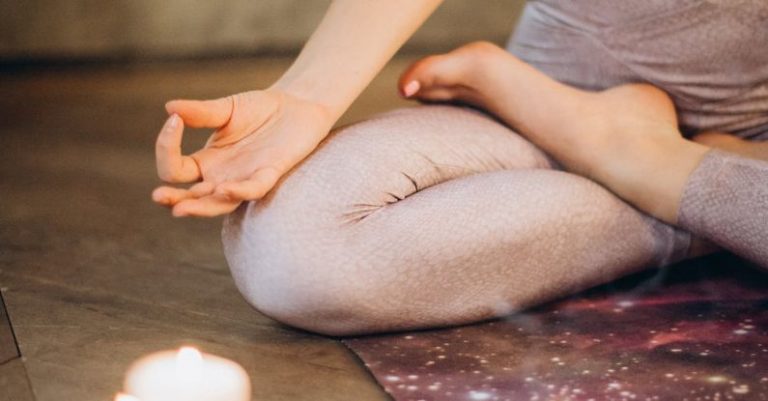
Mindfulness exercises are a powerful tool to help individuals cultivate present moment awareness, reduce stress, and improve overall well-being. For beginners looking to incorporate mindfulness into their daily routine, starting with simple exercises can lay a solid foundation for a regular practice. These exercises do not require any special equipment or prior experience, making them accessible to anyone interested in exploring mindfulness. By incorporating these practices into your day-to-day life, you can begin to experience the benefits of mindfulness and develop a greater sense of peace and clarity.
**Mindful Breathing**
One of the most fundamental mindfulness exercises is mindful breathing. This practice involves focusing your attention on the sensation of your breath as it enters and leaves your body. To begin, find a comfortable seated position and close your eyes. Take a few deep breaths to center yourself, then allow your breath to return to its natural rhythm. Notice the sensation of the air entering and exiting your nostrils or the rise and fall of your chest and abdomen with each breath. If your mind starts to wander, gently guide your attention back to the breath without judgment. Practice this exercise for a few minutes each day to cultivate mindfulness and develop a greater awareness of your breath.
**Body Scan**
The body scan is another simple mindfulness exercise that can help you develop a deeper connection to your body and release tension. To practice this exercise, lie down on your back in a comfortable position with your arms at your sides and your eyes closed. Begin by bringing your attention to your toes and slowly work your way up through each part of your body, noticing any sensations or areas of tension along the way. Pay close attention to each body part, allowing yourself to fully experience the present moment without trying to change anything. The body scan can help you relax both your body and mind, promoting a sense of calm and well-being.
**Mindful Walking**
Mindful walking is a great way to incorporate mindfulness into your daily routine, especially for those who prefer movement-based practices. To practice mindful walking, find a quiet outdoor space or walk in a circle indoors. Begin by taking a few deep breaths to center yourself, then start walking at a relaxed pace. Focus your attention on the sensation of your feet making contact with the ground, the movement of your legs, and the surrounding environment. Notice the sights, sounds, and smells around you as you walk, staying fully present in the moment. Mindful walking can help you feel more grounded and connected to the world around you.
**Gratitude Practice**
Practicing gratitude is a simple yet powerful mindfulness exercise that can shift your focus from what is lacking in your life to what you already have. To practice gratitude, take a few moments each day to reflect on three things you are grateful for. These can be big or small, ranging from a supportive friend to a delicious meal or a beautiful sunset. Allow yourself to fully appreciate and savor each moment of gratitude, cultivating a sense of contentment and abundance. By incorporating a gratitude practice into your routine, you can train your mind to focus on the positive aspects of your life and foster a greater sense of happiness and fulfillment.
**Mindful Eating**
Mindful eating is a practice that encourages you to slow down and fully savor your food, enhancing your eating experience and promoting healthier habits. To practice mindful eating, choose a meal or snack to focus on without any distractions, such as electronic devices or television. Take a moment to appreciate the appearance, aroma, and texture of your food before taking the first bite. Eat slowly, paying attention to each bite, and savoring the flavors and sensations in your mouth. Notice any thoughts or emotions that arise during the meal without judgment. Mindful eating can help you develop a healthier relationship with food and become more attuned to your body’s hunger and fullness cues.
**Embracing Stillness**
In our fast-paced world, finding moments of stillness and silence can be challenging but essential for cultivating mindfulness. Embracing stillness involves carving out time in your day to simply be present without any distractions or stimuli. Find a quiet space where you can sit or lie down comfortably and allow yourself to relax and unwind. Focus on the sensations in your body, the sounds around you, and the rhythm of your breath. Embrace the stillness and allow yourself to be fully present in the moment without any judgement or expectations. By incorporating moments of stillness into your routine, you can cultivate a greater sense of peace and inner calm.
**Incorporating Mindfulness Into Your Daily Life**
As you explore these simple mindfulness exercises for beginners, remember that consistency is key to developing a regular practice. Start by incorporating one or two exercises into your daily routine and gradually add more as you become more comfortable with the practice. Consider setting aside a specific time each day for mindfulness, whether it’s in the morning before starting your day or in the evening before bed. Find what works best for you and make mindfulness a priority in your life. With regular practice, you can experience the transformative power of mindfulness and cultivate a greater sense of presence, peace, and well-being.
**Embracing a Mindful Lifestyle**
In conclusion, embracing mindfulness through simple exercises can have a profound impact on your overall well-being and quality of life. By incorporating practices such as mindful breathing, body scans, mindful walking, gratitude, mindful eating, and embracing stillness into your daily routine, you can develop a greater sense of presence, awareness, and inner peace. Start small, be patient with yourself, and allow mindfulness to unfold naturally in your life. With dedication and practice, you can cultivate a mindful lifestyle that brings balance, clarity, and joy to your everyday experiences.





